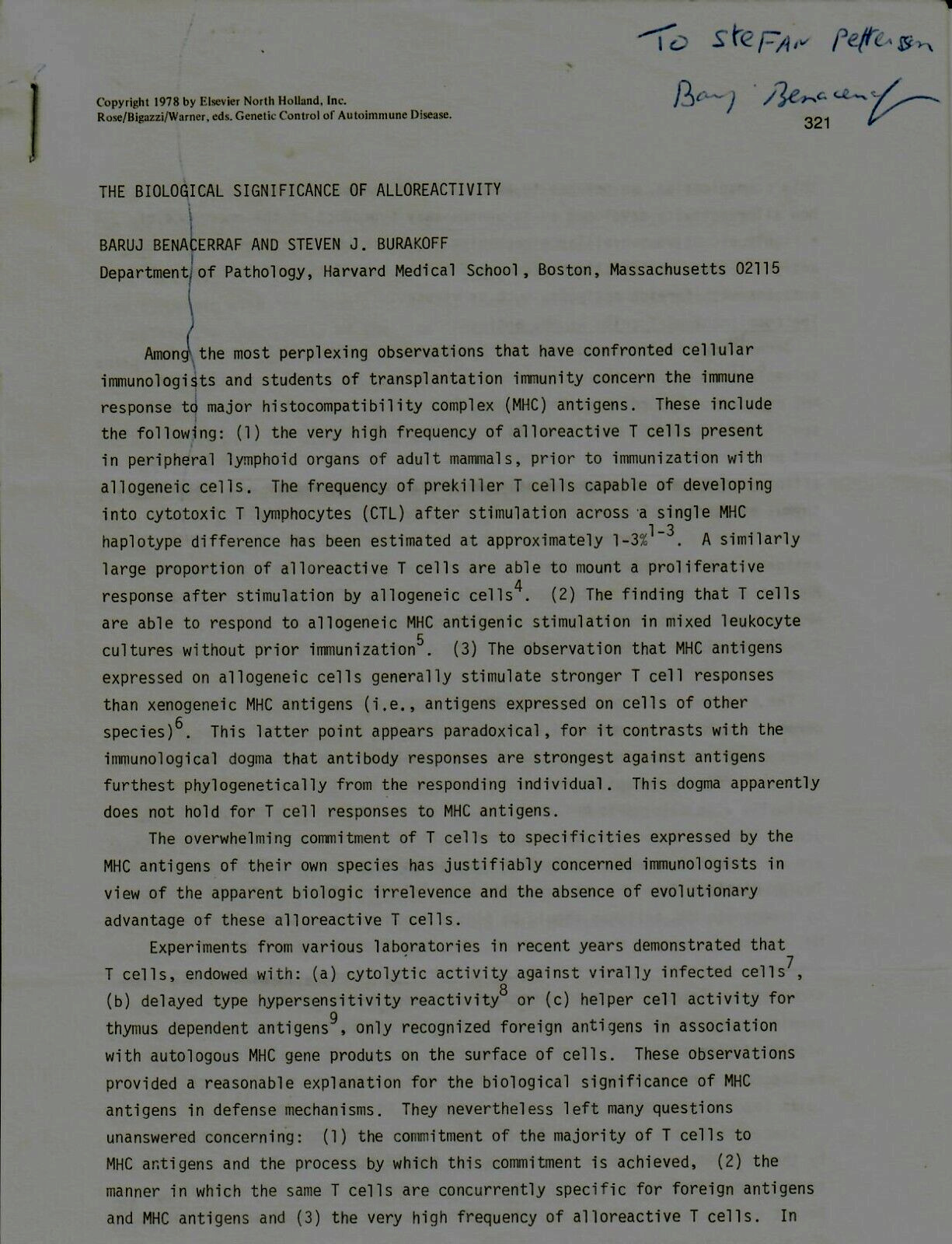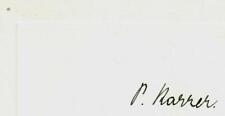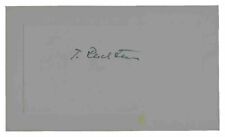"Nobel Prize in Medicine" Baruj Benacerraf Hand Signed Study COA For Sale

When you click on links to various merchants on this site and make a purchase, this can result in this site earning a commission. Affiliate programs and affiliations include, but are not limited to, the eBay Partner Network.

"Nobel Prize in Medicine" Baruj Benacerraf Hand Signed Study COA:
$199.99
Official PayPal Conversion Rates Add Currency Converter To Your Items Up for sale a Baruj Benacerraf Hand Signed Clinical Study "The Biological Significance of Alloreactivity." Dr Benacerff was awarded the Nobel Prize in Medicine in 1980. This piece is certified authentic by Todd Mueller and comeswith their Certificate of October 29, 1920– August 2, 2011) wasaVenezuelan-Americanimmunologist, who shared the 1980Nobel Prizein Physiology or Medicinefor the "discovery of themajor histocompatibilitycomplexgenes which encode cell surface protein moleculesimportant for the immune system's distinction between self and non-self."His colleagues and shared recipients wereJean DaussetandGeorge Davis Snell. Benacerrafwas born inCaracas,Venezuelaon October 29, 1920,toMoroccan Jewishparents.His father was a textile merchant. His brother is the well-knownphilosopherPaul Benacerraf.Benacerraf moved toParisfrom Venezuela with his familyin 1925. After going back to Venezuela, he emigrated to the U.S. in 1940. Thatsame year, Benacerraf attendedLycée Français de New York,where he earned aBaccalauréat(anacademic qualification French students achieve after high school and a diplomanecessary to begin university studies).In 1942 he earned his B.S. atColumbiaUniversity School of General Studies. He then went on to obtainhisDoctor of Medicine(M.D.)degree from theMedical College ofVirginia, the only school to which he was accepted due to his Jewishbackground.Shortly after beginning medical school, Benacerraf becameanaturalized U.S. citizen.From his Nobel autobiography: "By that time, I had elected to studybiology and medicine, instead of going into the family business, as my fatherwould have wanted. I did not realize, however, that admission to Medical Schoolwas a formidable undertaking for someone with my ethnic and foreign backgroundin the United States of 1942. In spite of an excellent academic record atColumbia, I was refused admission by the numerous medical schools I applied toand would have found it impossible to study medicine except for the kindnessand support of George W. Bakeman, father of a close friend, who was thenAssistant to the President of the Medical College of Virginia in Richmond.Learning of my difficulties, Mr. Bakeman arranged for me to be interviewed andconsidered for one of the two remaining places in the Freshman class." Afterhis medical internship US Army service (1945–48), and working at the militaryhospital ofNancy, France, he became aresearcher atColumbia University College of Physicians and Surgeons(1948–50).He performed research in Paris (1950–56), relocated toNew York University(1956–68),moved to theNational Institutes ofHealth(1968–70), then joinedHarvard Universitymedicalschool in Boston (1970–91) where he became the Fabyan Professor of comparativePathology, concurrently serving theDana-Farber CancerInstitute(1980). He began studying allergies in 1948, anddiscovered the Ir (immune response) genes that governtransplant rejectioninthe 1960s. Including a variety of different editions, Benacerraf is an authorof over 300 books and articles. At Columbia, Benacerraf got hisstart in Immunology withElvin A. Kabat. He spent two years there working onexperimental hypersensitivity mechanisms. He then moved toParisbecauseof family issues and accepted a position inBernardHalpern's laboratory at theHôpital Broussais. Here healso formed a close relationship with a young Italian scientist,Guido Biozzi.For six years he worked on the reticuloendothelial function in relation toimmunity. The reticuloendothelia function is the white blood cells inside of abarrier tissue. While there they discovered techniques to study the clearanceof particulate matter from the blood by the RES (reticuloendothelial system),and devised equations that govern this process in mammals. After six yearsBaruj returned to the United States because he could not make his own independentlaboratory in France. In the U.S. he developed his own laboratory in New YorkCity and returned to study on hypersensitivity. In New York, Baruj worked withseveral other immunologists on different fields of hypersensitivity. Afterworking in his New York lab, Baruj turned his attention towards the training ofnew scientists. Also in this time frame Baruj made the decision to devotehimself to his laboratory practices, instead of the family business. At thistime Baruj also made the discovery that would go on to win him the Nobel Prize.He noticed that if antigens (something that causes a reaction with the immunesystem) were injected into animals with a similar heredity, two groups emerged:responders and non-responders. He then conducted further study and found thatthe dominant autosomal genes, termed the immune response genes, determined theresponse to certain antigens. This complex process would lead to theunderstanding of how these genes would determine immune responses. hisdiscovery still holds true, and more has been discovered over the last century.More than 30 genes have been discovered in a gene complex called the majorhistocompatibility complex. The histocompatibility complex is a complex part ofDNA that controls the immune response. This research has also led to clarifyautoimmune diseases such asmultiple sclerosisandrheumatoid arthritis.

Related Items:
"Nobel Prize in Medicine" Frederick Robbins Signed 3X5 Card COA
$209.99

"Nobel Prize in Chemistry" Paul Karrer Signed 3X5 Card COA
$699.99

"Nobel Prize in Medicine" Tadeusz Reichstein Signed 5.75X3.25 Card COA
$209.99





